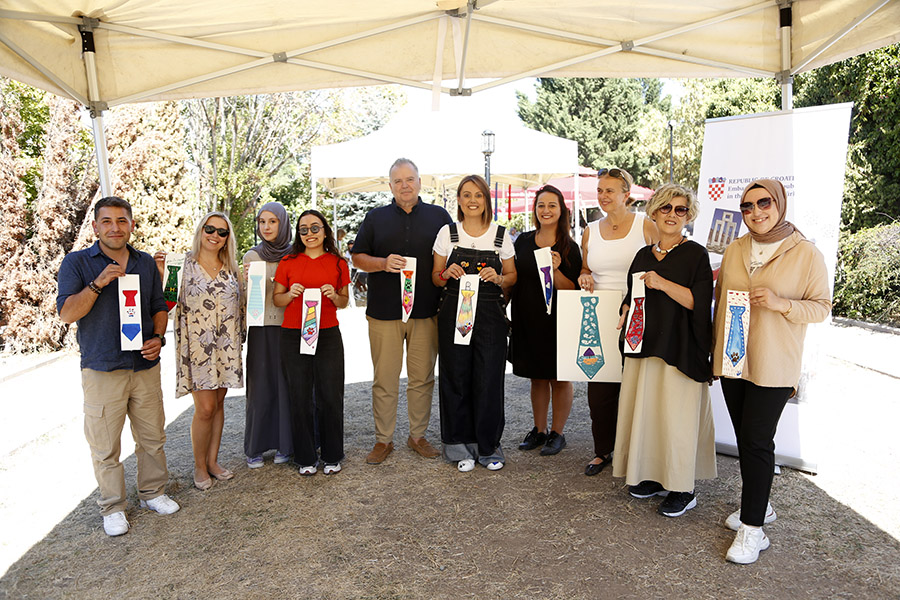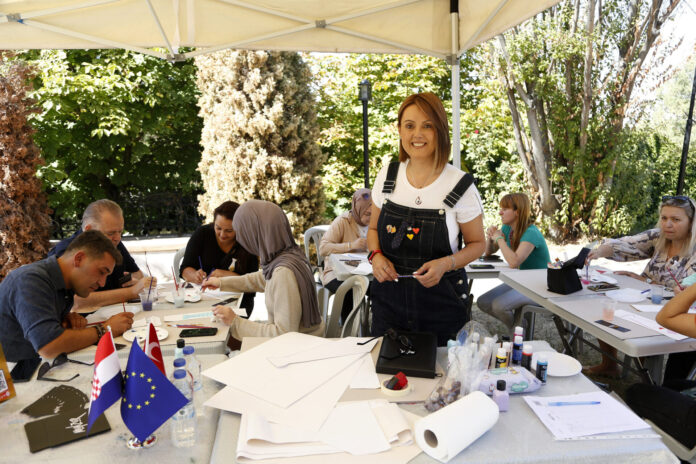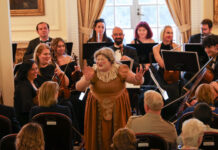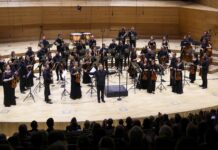As part of the Türkiye Culture Route Festival, artist Zeynep Munzur hosted an “Artistic Necktie Workshop” in the garden of the Devlet Resim ve Heykel Müzesi. The event, which saw the participation of Hrvoje Cvitanovic, Croatia’s Ambassador to Ankara, invited guests to paint canvases in the unique shape of neckties, blending creativity with cultural expression.
Haşim KILIÇ
THE workshop, held in two different sessions, attracted great interest from art lovers. Artist Zeynep Munzur distributed pre-prepared canvases to the participants, who then painted the necktie-shaped canvases as they wished. Croatia’s Ambassador to Ankara, Hrvoje Cvitanovic, also attended the event. Ambassador Cvitanovic, who stated that they organize events to introduce Croatian culture and art to the Turkish people, said: “Young people who came here tried to learn about Croatia through painting and to develop their perspectives and interests. This is very important for us.”

SOLDIERS WORE IT TO SHOW THEY WERE CROATIAN
Hrvoje Cvitanovic, emphasizing that the necktie is an important element of Croatian culture, shared the following information about the history of the necktie in Croatia: “Croatians have always tried to assert their identity, and the necktie emerged in this way. Croatian soldiers in the Austro-Hungarian, Austrian, and even French armies wore this ribbon to signify that they were Croatian. The word ‘necktie’ (kravat) is derived from ‘Croat,’ meaning ‘Croatian.’ I am truly happy that we have this symbol of Croatia, which almost every man wears daily. It represents our culture and our struggle as a small country to be recognized and visible.”

















